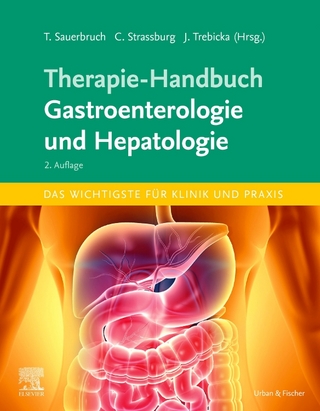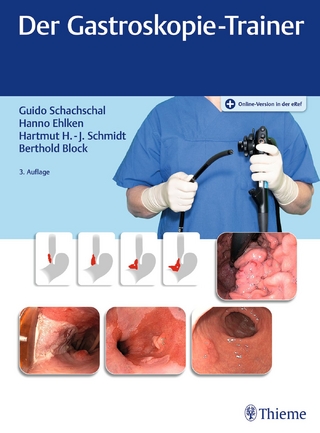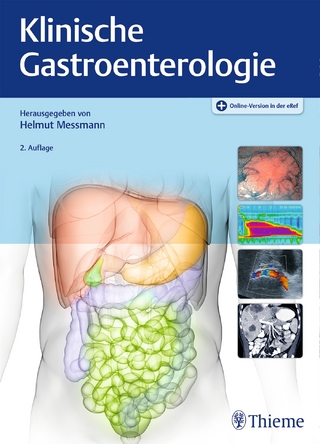
The Cleveland Clinic Approach to Hereditary Colorectal Cancer
Blackwell Publishing Ltd (Verlag)
978-1-4051-2784-4 (ISBN)
- Titel wird leider nicht erscheinen
- Artikel merken
The increased awareness (both within the medical profession and the general public) of colorectal cancer, together with the new screening program in the US and the proposed programme in the UK, will result in a higher rate of detection of the disease and therefore more patients. Although early detection is half the battle with this disease, at present 60 per cent of patients will not be alive 5 years after diagnosis. The Cleveland Clinic is world famous for its expertise in the management of hereditary colorectal cancer. The David G. Jagelman Inherited Colorectal Cancer Registries are the largest single institution registries in the world, with around 500 FAP families and more than 120 HNPCC families. This book encapsulates the experience and expertise of the medical team at the Cleveland Clinic. As genetics becomes more important to our understanding of all diseases, and colorectal caner in particular, more medical centers throughout the world are setting up genetic clinics and registries. This book will be a unique manual on how to set up a genetic unit for hereditary bowel cancer and how to manage patients and their families with these syndromes.
In addition, the text will provide a comprehensive explanation of the science behind the clinical care.
CONTENTS SECTION 1. THE BASICS Chapter 1.1. Hereditary Colorectal Cancer: History (James Church) A description of the way in which the various syndromes were first described and the genetics behind them was first discovered. Chapter 1.2. Hereditary Colorectal Cancer: the genetics (Graham Casey, Marcia Cruz-Correira) An overview of the genetics of colorectal carcinogenesis, with a detailed coverage of the genes causing the various syndromes of inherited colorectal cancer. Chapter 1.3. Taking a family history (Ellen McGannon, Lisa LaGuardia) How often it is done, how accurate. Techniques for taking a family history; generating/constructing a family tree, getting consent; legal issues, HIPAA issues Chapter 1.4. Genetic testing (Brian Clark, Jennifer Stein) Definition of testing for a germline mutation. How to do it. CLIA approved laboratories. Counseling and consent. Disclosing information. Insurance issues. Family issues, Pyschology. Compliance. Chapter 1.5. Managing A Registry (Ellen McGannon, Lisa LaGuardia) Definition of a registry. Mission of a registry. Structure and function. Tips for how to set up and run a registry. Chapter 1.6. Relational databases (Susan Fay, Elena Manilich) Types of databases. Requirements for different types of database. Options available. Designing a database. Using a database Chapter 1.7. Research: informed consent (Ingrid Kobe) HIPAA, IRBs. The practicalities of designing a research study and getting it approved. Requirements, how to meet them, how to get a study through IRB. Consenting patients. How to optimize accrual. Collaborative studies. Chapter 1.8. Education: websites, newsletters, displays, brochures (Lisa la Guardia) Patient educational material. What is useful; what patients like and need. How to produce a newsletter/brochure. How to design and produce a tabletop display. SECTION 2. THE SYNDROMES Section 2.1 Familial Adenomatous Polyposis Chapter 2.1.1. FAP: Overview (Juan Nogueras) Epidemiology, presentation, expression, genotype/phenotype correlations, range of organs involved Chapter 2.1.2. FAP: Surgery (James Church, Juan Nogueras) Options for surgical treatment of the large intestine with description of outcomes and advantages and disadvantages of each. Need for surveillance, management of pouch polyposis, anal transitional polyposis Chapter 2.1.3. FAP; the duodenum and small bowel (Carol Burke, Matt Walsh) Dr Burke to cover surveillance, endoscopic techniques, Spigelman staging and capsule endoscopy. Dr Walsh to cover surgical options and techniques Chapter 2.1.4. FAP; Desmoids (James Church) Review of incidence, risk factors, possible prevention, presentation, diagnosis, managementChapter 2.1.5. FAP: Chemoprevention Section 2.2 HNPCC Chapter 2.2.1. HNPCC: diagnosis (Brian Clark, Marcia Cruz-Correira) Criteria for defining HNPCC. Yield of genotype analysis. Differential diagnosis. Genotype/phenotype associations Chapter 2.2.2. HNPCC: Surgery (James Church) Surgical options for prophylaxis and treatment. Pros and cons of each. Chapter 2.2.3. HNPCC: Surveillance (Carol Burke) Review of recommendations for surveillance of the colon and rectum, and extracolonic organs potentially involved in HNPCCSection 2.3 Other syndromes Chapter 2.3.1. Peutz-Jehger's Syndrome (Carol Burke, James Church) Description of syndrome; incidence, presentation, epidemiology, management. Chapter 2.3.2. Juvenile Polyposis (Feza Remzi) Description of syndromes; incidence, presentation, epidemiology, management.Chapter 2.3.4. MYH Polyposis Chapter 2.3.5. Hyperplastic Polyposis Chapter 2.3.6. Familial colorectal cancer (James Church) Definition; possible genotypes. Polymorphisms. Surveillance and surgerySection 2.4. Pathology Chapter 2.4.1. Pathology of Hereditary Colorectal Cancer (Mary Bronner) Distinguishing pathologic features of tumors in FAP, HNPCC, Peutz-Jehgers and Juvenile polyposis
| Erscheint lt. Verlag | 15.4.2008 |
|---|---|
| Zusatzinfo | 75 |
| Verlagsort | Oxford |
| Sprache | englisch |
| Maße | 189 x 246 mm |
| Themenwelt | Medizinische Fachgebiete ► Innere Medizin ► Gastroenterologie |
| Medizin / Pharmazie ► Medizinische Fachgebiete ► Onkologie | |
| ISBN-10 | 1-4051-2784-8 / 1405127848 |
| ISBN-13 | 978-1-4051-2784-4 / 9781405127844 |
| Zustand | Neuware |
| Haben Sie eine Frage zum Produkt? |
aus dem Bereich


